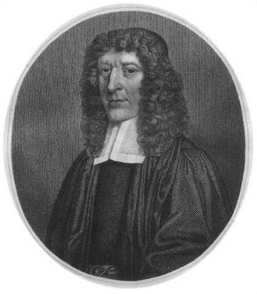
A few months ago, I devoted a two-part post (part 1; part 2) to a particular argument and counterargument concerning the age of the world in David Hume’s Dialogues Concerning Natural Religion (1779). I’m returning to the Dialogues now to discuss a different passage, with two aims in mind. I want to identify, first, what may be a previously unnoticed influence on the passage, and second, what may be a previously unnoticed—and certainly is a fairly amusing—typographical error quoting the passage.
As its title suggests, the Dialogues is a philosophical work in dialogue form, with three protagonists, Cleanthes, Philo, and Demea. Pamphilus, who narrates the dialogue to his friend Hermippus, comments on “the accurate philosophical turn of Cleanthes,” “the careless skepticism of Philo,” and “the rigid orthodoxy of Demea,” which might lead you to assume that Hume’s views are voiced by Cleanthes. In fact, however, it’s Philo who is generally Hume’s mouthpiece.
The passage I want to discuss is from part II of the Dialogues, where Cleanthes offers a version of the argument from design. He says:
Look round the world: contemplate the whole and every part of it: you will find it to be nothing but one great machine, subdivided into an infinite number of lesser machines, which again admit of subdivisions to a degree beyond what human senses and faculties can trace and explain. All these various machines, and even their most minute parts, are adjusted to each other with an accuracy which ravishes into admiration all men who have ever contemplated them. The curious adapting of means to ends, throughout all nature, resembles exactly, though it much exceeds, the productions of human contrivance; of human designs, thought, wisdom, and intelligence. Since, therefore, the effects resemble each other, we are led to infer, by all the rules of analogy, that the causes also resemble; and that the Author of Nature is somewhat similar to the mind of man, though possessed of much larger faculties, proportioned to the grandeur of the work which he has executed. By this argument a posteriori, and by this argument alone, do we prove at once the existence of a Deity, and his similarity to human mind and intelligence. (emphasis added)
That’s a good précis of Cleanthes’s basic argument, and much of the rest of the Dialogues consists in Philo’s dissecting and attacking it.
Various philosophers and theologians have been suggested, with varying degrees of plausibility, as models for Cleanthes, including Joseph Butler, Lord Kames (né Henry Home, a cousin of Hume’s), Colin Maclaurin, and George Cheyne. I don’t want to try to adjudicate the issue here. But the striking (and emphasized by me) phrase “ravishes into admiration,” as I noticed a few years ago, appears, more or less, in Cudworth’s A Treatise Concerning Eternal and Immutable Morality (1731).
Ralph Cudworth (above; 1617–1688) is not really a household name. He spent his career at Cambridge University. He was the informal leader of a group of thinkers later dubbed the Cambridge Platonists, often taken to include his daughter Damaris Cudworth Masham, one of the earliest English women philosophers. Cudworth published just a single major philosophical work, The True Intellectual System of the Universe (1678), but a number of his manuscripts were published posthumously, including the Treatise.
If you were to judge just from his explicit references to Cudworth, you could suspect that Hume might not have read him at all: his name appears just three times in Hume’s published writings, always in lists of philosophers (“Cudworth, Lock[e] and Clark[e]”; “LOCKE, CLARKE, and CUDWORTH”; “CUDWORTH, CLARKE, and others”—emphasis in original in all three cases) adopting or ignoring various philosophical positions that Hume is discussing.
But Hume’s biographer Ernest Campbell Mossner discovered clear evidence in early memoranda of Hume’s that he read Cudworth’s The True Intellectual System of the Universe: Hume lists Cudworth’s inventory of four types of atheists and proposes to add two or three more. Mossner adds, “Whether Hume knew Cudworth’s posthumous continuation, A Treatise concerning Eternal and Immutable Morality (1731), I am not sure, but would hazard the guess that he dipped into it.”
Here’s the passage from Cudworth’s Treatise, book IV, chapter 2, section 13, that makes me think that Mossner was right. (In his A Short History of English Literature [1898], George Saintsbury opined, “Though he has nothing like the vigour and distinction of his enemy, Hobbes, as a prose-writer, Cudworth stands high among our early philosophers for his style, which, if not exactly elegant and never splendid, is solid and clear.” Your mileage may vary. I find him turgid.)
But the intellect doth not rest here, but upon occasion of those corporeal things thus comprehended in themselves, naturally rises higher to the framing and exciting of certain ideas from within itself, of other things not existing in those sensible objects, but absolutely incorporeal. For being ravished with the contemplation of this admirable mechanism and artificial contrivance of the material universe, forthwith it naturally conceives it to be nothing else but the passive stamp, print and signature of some living art and wisdom; as the pattern, archetype and seal of it, and so excites from within itself an idea of that divine art and wisdom. (emphasis added)
It’s not just because “ravish” and “admirable” occur in the same passage that makes me think so. Henry More, a fellow Cambridge Platonist, wrote in 1653 that he was “ravished with admiration” of Descartes’s mechanical philosophy, yet there’s no reason to think that Hume might have been thinking of More when he was composing part II of the Dialogues. But in the same section of the Treatise, Cudworth is at least hinting at the same type of argument that Cleanthes is expounding in the Dialogues, as I’ll explain in part 2.

